Planning your first trip to the charming and diverse country of Romania? Whether you’re drawn by medieval castles, dramatic Carpathian peaks, or vibrant city life in Bucharest, getting your visa sorted well in advance can make a big difference in how smoothly your journey begins. This guest post offers a friendly and thorough guide to navigating the Romanian e‑Visa (and short‑stay visa) world—covering what it is, who can apply, how long it takes, how much it costs, how to stay safe, and lots more travel tips to help you get the most from your stay.
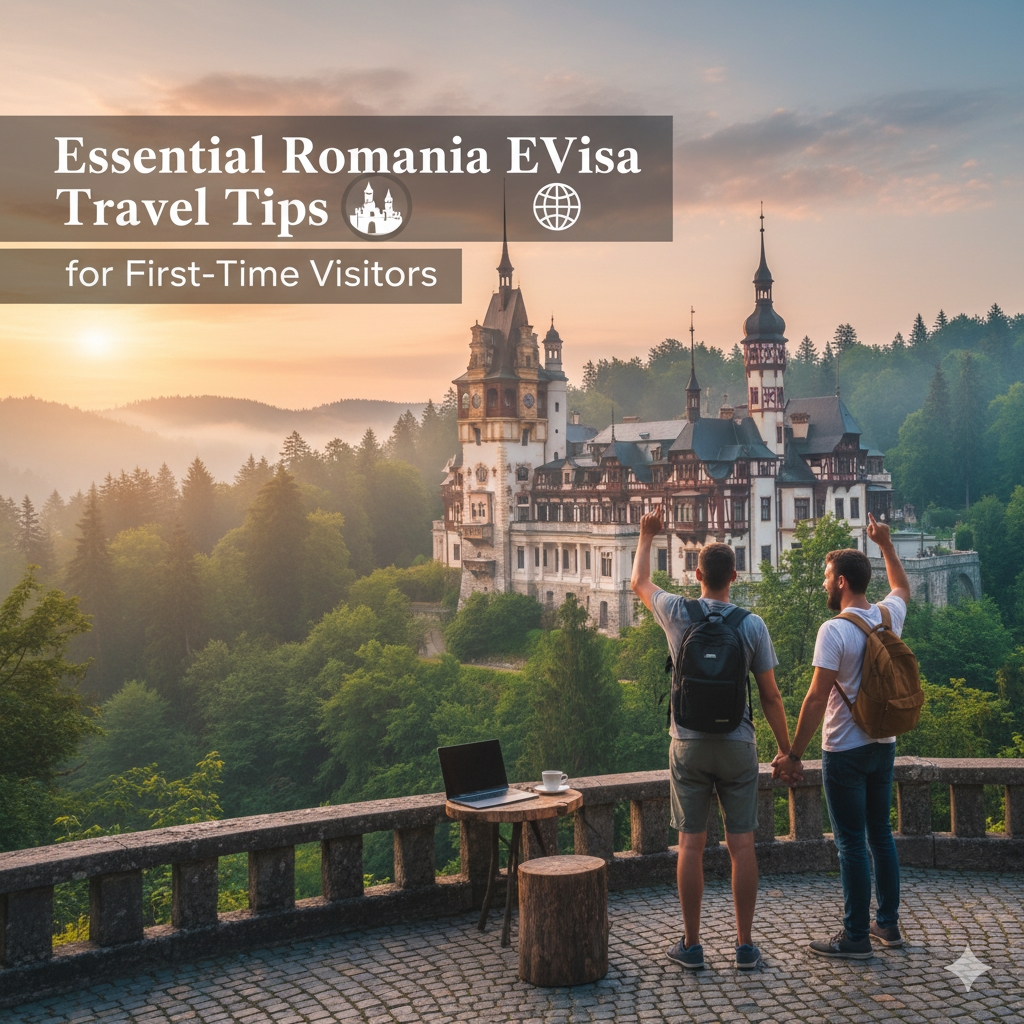
What is an e‑Visa for Romania, and who can apply?
When we talk about a “Romania e‑Visa”, we’re referring to the online application tool provided by the Ministry of Foreign Affairs of Romania (MAE) via the portal at In short:
It’s a way to begin the visa application process online—filling in personal details, uploading documents, and scheduling your in‑person appointment (if required).
It applies to foreign nationals (non‑EU/EEA) who must obtain a visa to enter Romania for short‑stay purposes (tourism, business, visiting friends/relatives).
Who can apply? Third‑country nationals (i.e., those whose nationality requires a visa to enter Romania) are eligible to use the portal. The exact list of countries varies. See the online portal for your country’s requirements.
So if you are planning to visit Romania and your nationality usually requires a visa for entry, using the e‑Visa portal is a smart way to get started.
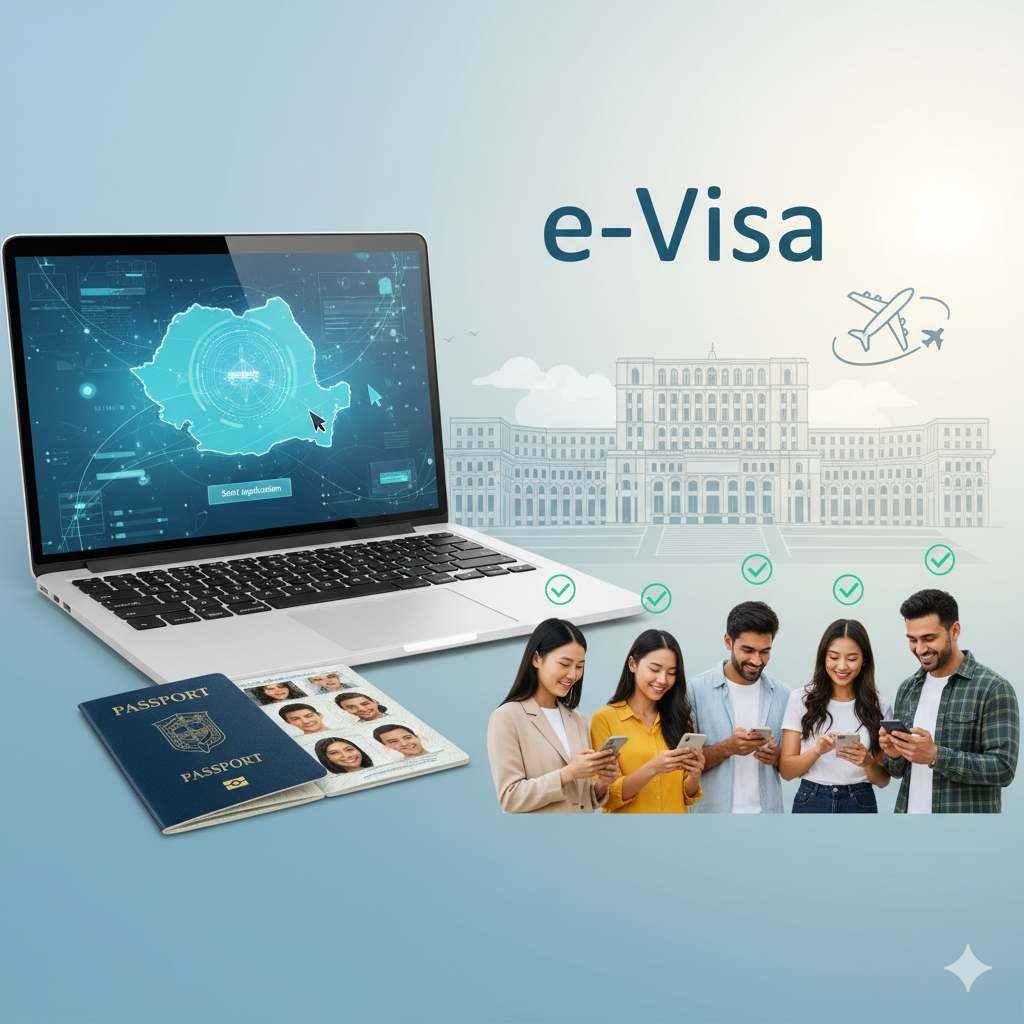
Does Romania accept fully online e‑Visa applications?
Yes—to a large extent—but with some caveats. The online e‑Visa portal allows you to start your application electronically: complete forms, upload supporting documents, pay fees (where applicable), and schedule your appointment.
However, it is not always a fully paper‑free, interview‑free process for all applicants:
After your electronic submission, you may still need to visit a Romanian diplomatic mission (embassy/consulate) to present original documents and attend an interview or biometric capture, depending on your country of residence. The portal states:
“After the online visa application is validated … an appointment for the interview shall be granted at the Romanian diplomatic mission/consular post.”Some nationalities may have additional document requirements (such as a verified “invitation” or special approval) that necessitate further steps offline. For example, the General Inspectorate for Immigration (IGI) in Romania may be required to issue an opinion in certain categories.
In short: you can apply online, but you should not assume the entire process will be handled purely online without any in‑person steps.
For travellers, this means start early using the e‑Visa portal—upload what you can—but be prepared to visit the Romanian embassy/consulate in your area if required.

What is the processing time for a Romanian e‑Visa?
How long will you wait? There's no exact one‑size‑fits‑all answer, but we can give you a reasonable expectation based on the official guidance and reported experiences.
Official guidelines
The MAE portal indicates that short‑stay visa applications may be submitted at least 3 weeks (21 days) prior to the planned travel date, but no more than 3 months in advance.
The IGI states that for short‑stay visas, their opinion can be issued within 7 working days, extended by another 7 working days in well‑justified cases.
Another source states typical short‑stay processing may take about 15 calendar days, though in certain cases up to 30 or even 60 days if additional checks are needed.
Real‑world reports
On forums, applicants report timelines of 2 to 4 weeks in many cases. For example:
“I applied for a short stay business visa via Romania … chances are good … the wait is usually 15 days but can be up to 45 days.”Some applicants have reported delays beyond 3 weeks.
Practical tip
For first‑time visitors, aim to submit your application at least 3 to 4 weeks before your travel date, ideally more (4‑6 weeks) to give yourself a cushion in case of delays or additional document requests.
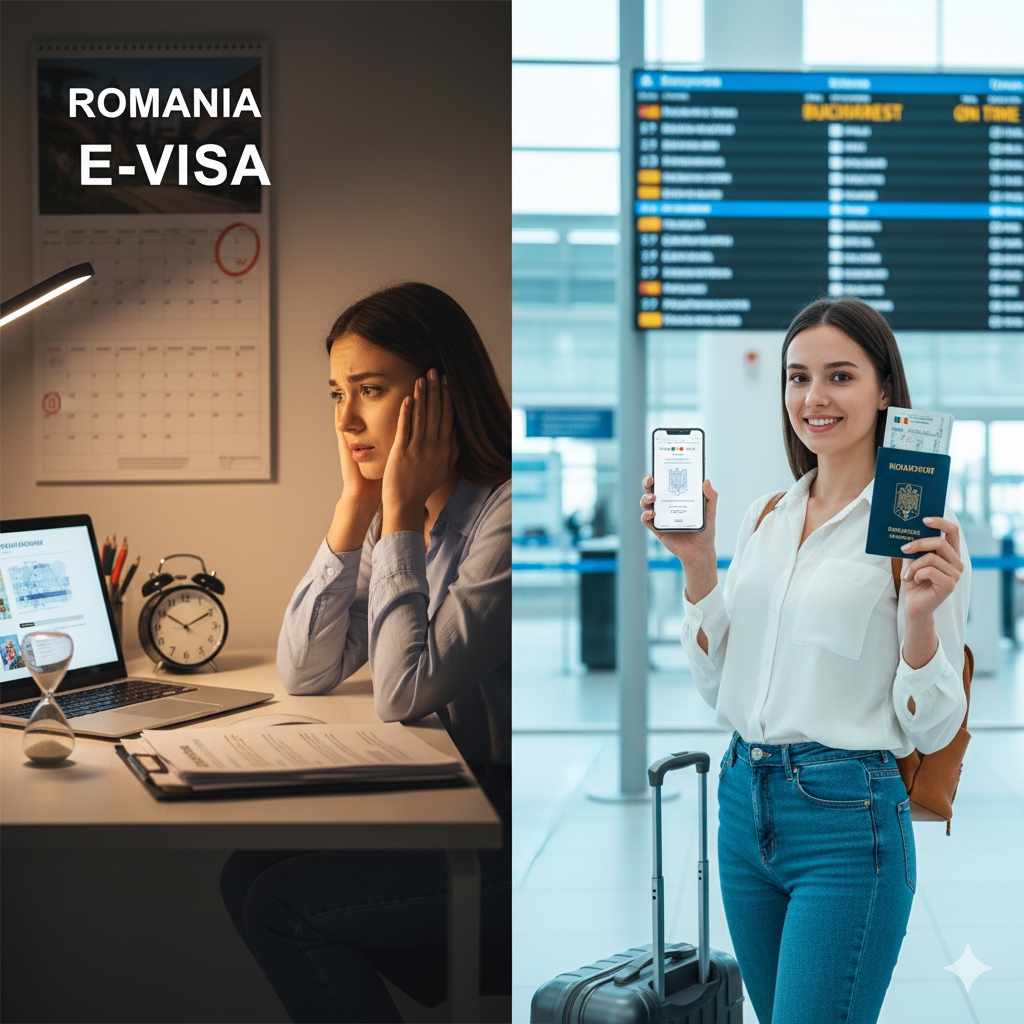
What documents do I need to apply for a Romania tourist e‑Visa?
When applying for a short‑stay visa (which is what most tourists will use) via the e‑Visa portal, you will need to gather several standard documents. While exact Romania eVisa Requirements may vary by country and category, here’s a general checklist:
A valid passport: Your passport must be valid for 6 months beyond your intended stay in Romania, and have at least two blank pages for the visa stamp.
Visa application form: You need to complete the Romania visa application form online or in paper format, depending on the specific type of visa you are applying for.
Two passport-sized photographs: You must provide two recent color passport photos that meet the Romania visa photo requirements.
Proof of accommodation: You need to provide evidence of your accommodation arrangements in Romania, such as a hotel booking confirmation, a rental agreement, or a letter of invitation from a host.
Travel itinerary: You must provide a detailed itinerary of your trip to Romania, including your intended dates of arrival and departure, and the cities or regions you plan to visit.
Travel insurance: You need to have valid travel medical insurance that covers your entire stay in Romania, including emergency medical treatment, hospitalization, and repatriation.
Proof of financial means: You must provide evidence of sufficient funds to cover your stay in Romania, such as bank statements, credit card statements, or a letter of support from a sponsor.
Criminal record certificate: Depending on the type of visa you are applying for, you may need to provide a criminal record certificate issued by the authorities in your home country or the country where you have resided for the past year.
Pro tip: Even if the portal doesn’t ask for every document explicitly, bringing more documented evidence (rather than less) is safer—especially for travellers applying for the first time.
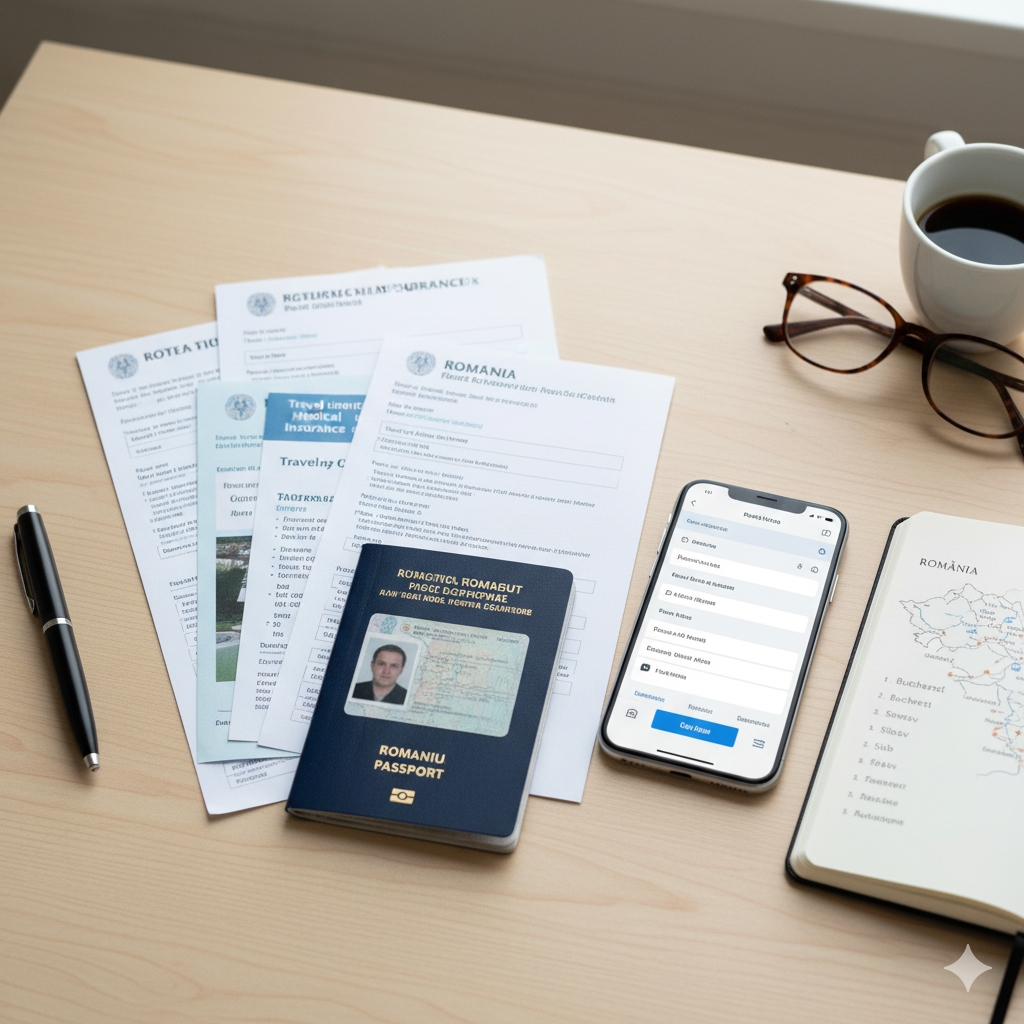
How many days can I stay in Romania with the e‑Visa / short‑stay visa?
If you are granted a Romania Short-Stay Tourist eVisa (Type C) for Romania, here’s how the stay rules generally apply:
The right of stay under a short‑stay visa type C typically cannot exceed 90 days during any 180 days.
In many sources, the allowed stay is described as “up to 90 days” within any 180‑day timeframe.
It may be issued as a single‑entry or multiple‑entry visa, depending on your circumstances.
So, for a tourist e‑Visa/short‑stay, you’ll most likely be granted something like: stay up to 90 days in 180 days. Always check the visa sticker or approval letter for your exact permitted stay, as border officials may give fewer days depending on your application.
Quick example
You arrive in Romania, and your visa allows 90 days stay. You enter. After 90 days, you must exit (or switch to a different visa/permit if eligible). If you leave earlier, say after 60 days, you still cannot simply re‑enter the next week and stay another 90 unless the overall 90 days in the previous 180 are respected.
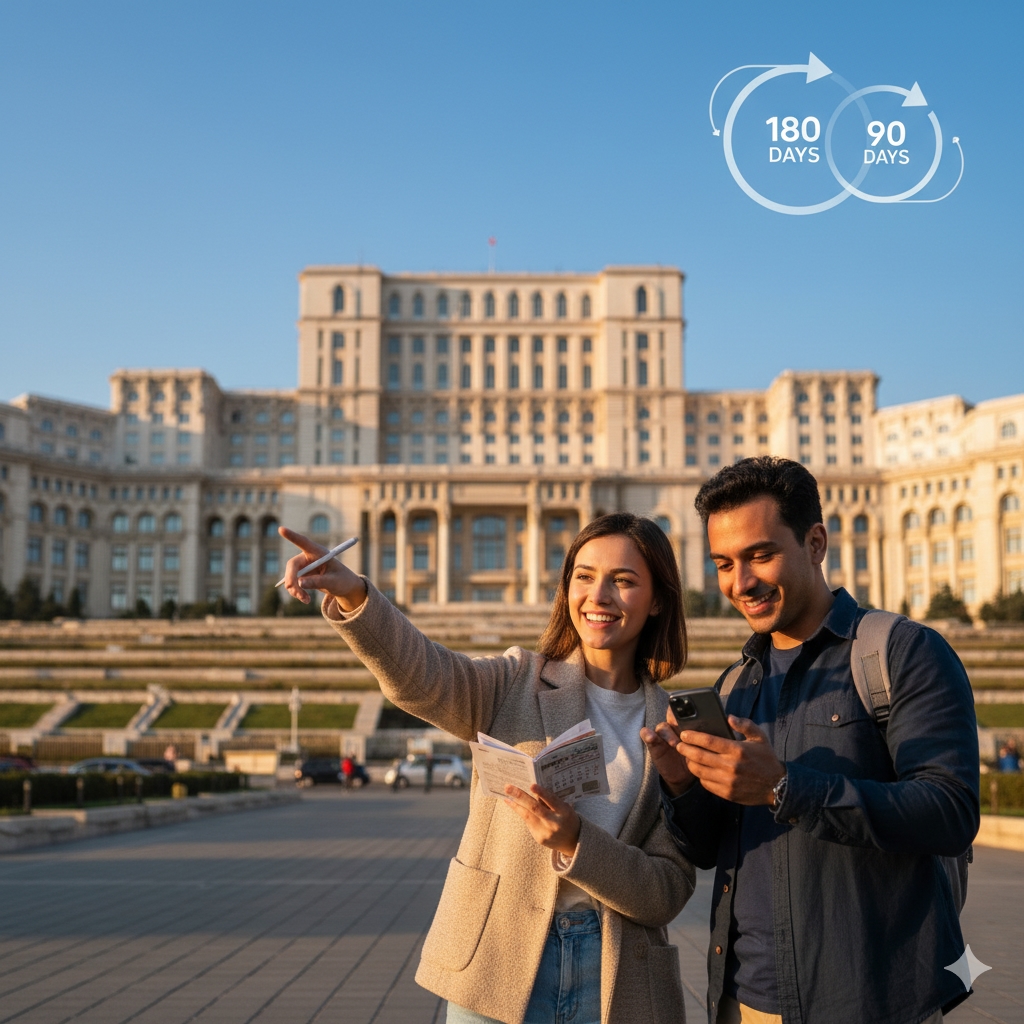
Can I extend my stay in Romania if I have an e‑Visa?
Short answer: Mostly no, except in certain exceptional cases.
According to the IGI and official guidance:
For short‑stay visas (Type C), the stay “cannot be extended” under normal circumstances.
However, in objective or humanitarian situations (force majeure, serious health issues), an extension may be granted. A fee may apply.
The total stay still must not exceed 90 days in a 180‑day period.
What this means for you
If you hold a tourist e‑Visa/short‑stay for Romania, plan your trip so that you depart on or before your authorized stay ends. Do not rely on being able to extend it casually. If you foresee needing a longer stay (for study, work, family, etc.), you may need to apply for a long‑stay visa (Type D) and permit ahead of time.
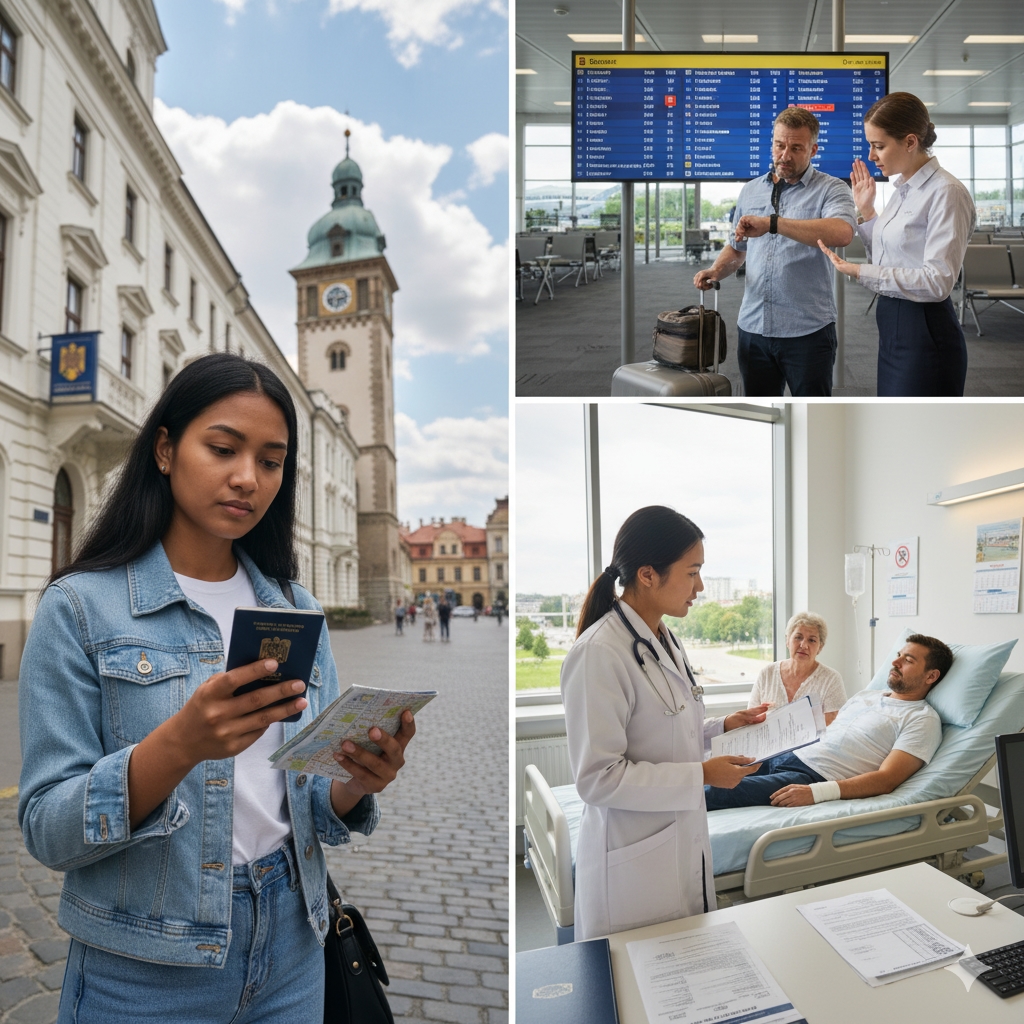
What happens if my Romania e‑Visa application is rejected?
It’s a scenario nobody wants, but it’s good to know what happens and how you might handle it.
Why might your application be rejected?
The official FAQ says:
“Each visa application is individually analysed … the reasons for the visa refusal are mentioned in the Form for notifying and supporting the refusal.”Common issues (reported by travelers) include: incomplete or inconsistent information; supporting documents missing or weak; travel history lacking; insufficient proof of funds.
For example, one applicant wrote:
“My application was pending, I applied a month ago and still no response!”
What to do if you’re rejected
You may apply again at any time with new supporting documents. The FAQ explicitly says a new application may be lodged.
Make sure to strengthen your case: add more documentation, ensure clarity of travel purpose, ensure passport validity, show ties to home country, etc.
Understand that even with approval, entry into Romania is never absolutely guaranteed—border control still has discretion. The FAQ warns:
“Holding a visa does not guarantee the holder entry into the national territory.”Check if there is a feedback form from the embassy/consulate—they should provide a reason for refusal (though sometimes generic).
If you’re rejected: pause, review your documentation, understand the reason, reapply if appropriate rather than just pushing forward with weak submission.

What is the fee for a Romania e‑Visa, and how do I pay it?
Here’s what you should know about visa fees for Romania short‑stay visas:
Standard fee levels
According to the MAE portal:
Short‑stay visa (Type C): (for most nationalities)
Airport transit (Type A):
Long‑stay visa (Type D):
Reduced fees/exemptions may apply depending on bilateral agreements between Romania and the applicant’s country.
Another source notes:
“The visa fee is 60 Euro and is paid to the Romanian diplomatic mission in the state in which you are requesting it.”
This lower figure may apply to certain countries or older reference data—always check the specific embassy/consulate for your nationality.
How to pay
Payment is typically made at the time of submitting the visa application at the diplomatic mission or visa application centre (VAC).
When using the e‑Visa portal, ensure you review payment instructions carefully—whether payment is to be made online, or at the in‑person appointment, and the accepted currency. The MAE statement:
“The visa processing fees are charged in EUR, as well as in US Dollars, or in the currency of the state of residence… based on the average exchange rate from the previous month.”Note: Non‑payment or incorrect payment of fees may render the application inadmissible.
Practical tip
Check your amenable currency (your national currency vs. EUR), check if the fee needs to be paid before or at the appointment, get proof of payment (receipt) and keep it with your application documents.
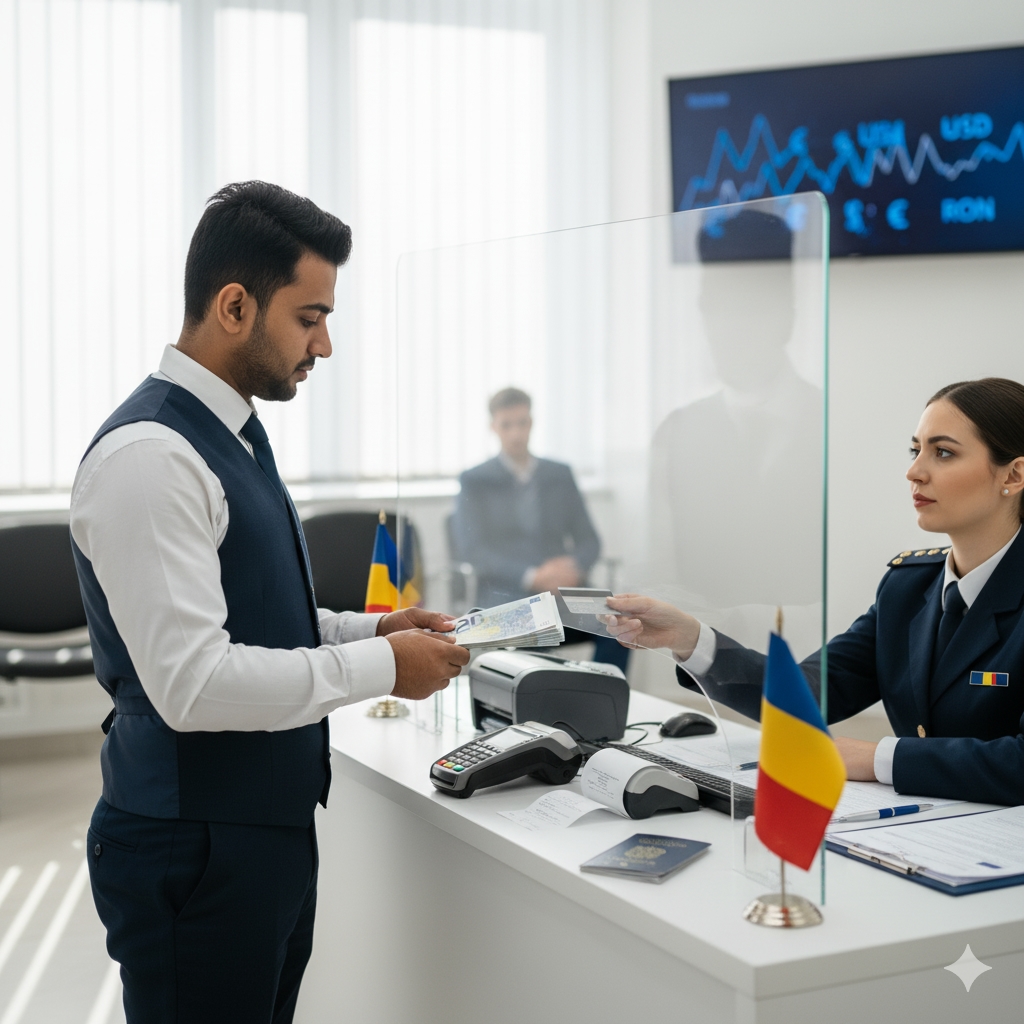
Do I need health insurance for travel on a Romania e‑Visa?
Yes—travel medical insurance is a strongly advised (and often required) part of your Romanian visa application, especially for the short‑stay type.
Key points:
The itinerary and visa guidance for tourists mentions proof of valid travel insurance covering medical emergencies.
The specific example for Indian applicants mentions minimum coverage.
Even if not explicitly asked, border officials may enquire about insurance; it’s wise to have one anyway for your travel peace of mind.
What to check in your insurance
Does it cover emergency medical treatment, hospitalization, return‑home/repatriation?
Is it valid in Romania (and ideally the wider EU/EEA area)?
Does it cover the full duration of your stay?
Keep a printed copy of the insurance policy in your carry‑on or document folder—it’s better to be prepared than caught off guard.
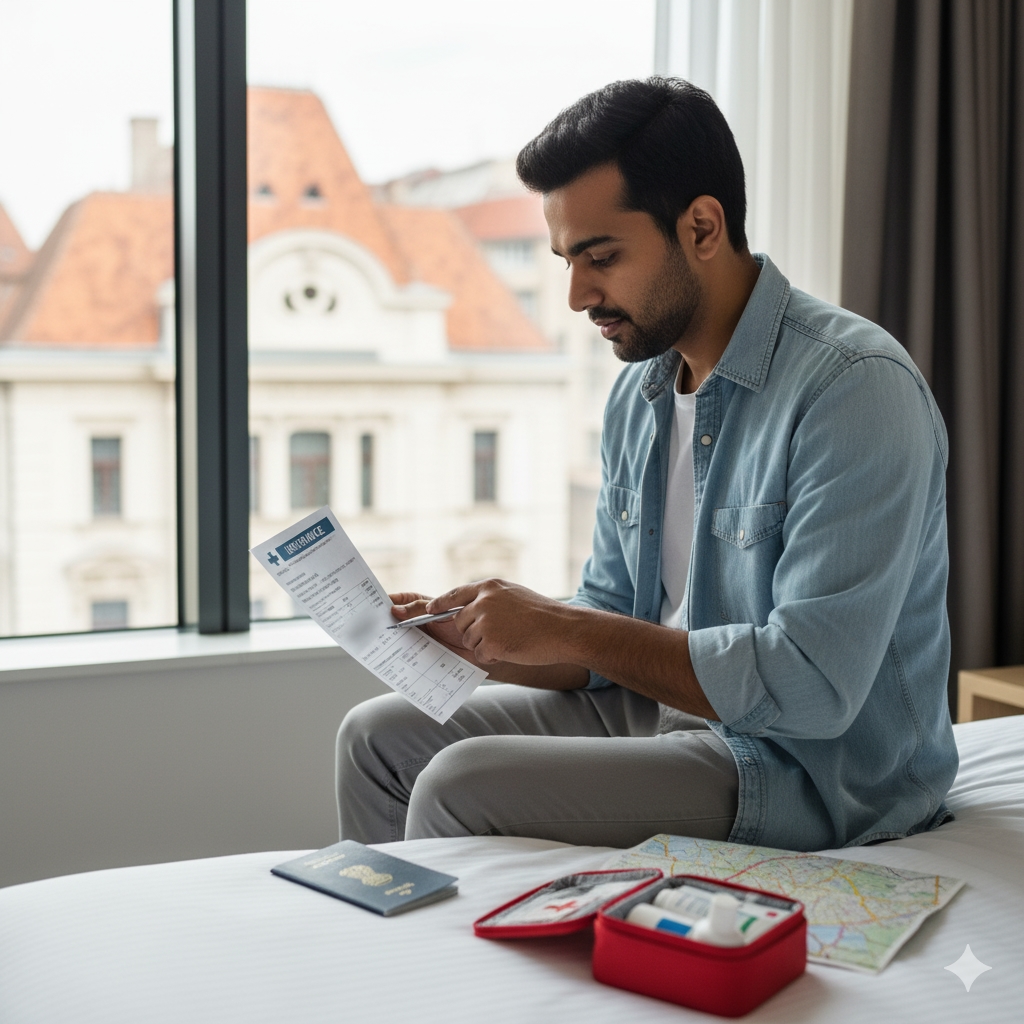
Travel Tips for First‑Time Visitors to Romania
Now that we’ve covered the visa stuff, let’s shift to some traveller‑friendly advice to help your Romanian visit be smooth, memorable and stress‑free.
1. Arrive with your passport and visa in order
Make sure your passport meets the validity criteria, your visa is stamped or approved as required, and you carry printouts of your hotel reservation, travel insurance, return ticket, and recent bank statement. Having a folder of printed documents makes checks at arrival easier.
2. Know the 90/180‑day rule
If you are using a short‑stay visa (or entering under a visa‑free regime), you are under the rule of “up to 90 days stay in any 180‑day period”. It’s easy to miscalculate and border agents may remind you. On forums, travellers have reported being told they only had “20 days left” due to previous days in the country.
Rule of thumb: track your arrival dates and ensure you don’t exceed your allowed stay.
3. Local culture & language
Learning a few Romanian phrases goes a long way—locals appreciate it.
Romania has a rich tradition of hospitality, but as with anywhere, being polite, respectful of local customs (e.g., church etiquette, tipping standards) makes your trip smoother.
4. Transport and getting around
From Bucharest to Transylvania, the countryside to the coast, Romania has good bus/train connections. However, remote mountain roads may require more planning—check connections, consider renting a car if you’re exploring rural areas.
5. Stay aware of border rules
Even inside the EU, Romania may still perform identity checks at its borders (especially if you’re coming via land). Be prepared to show your passport. Especially if your visa is stamped for “90 days stay” make sure you leave before expiry—overstaying could lead to fines or issues with future travel.
6. Money & costs
The local currency is the Romanian Leu (RON). Having some cash for smaller shops is handy, though cards are widely accepted in cities.
For budgeting: accommodation, food, transport costs are generally lower than Western Europe—but premium tourist spots will cost more.
Keep proof of funds handy if asked at visa or border control.
7. Packing & climate
Romania’s climate varies: expect hot summers, chilly winters (especially in mountains), and changeable weather during shoulder seasons. If you’re visiting mountainous regions (like the Carpathians), bring layers, waterproof gear, and sturdy shoes.
8. Safety for couples/travellers
Romania is generally safe for couples travelling alone, including female travellers—just follow usual travel safety habits: avoid isolated areas at night, keep valuables secure, use official taxis or ride‑hailing apps, inform someone of your itinerary when venturing into remote areas.
9. Explore beyond the tourist track
Don’t just stick to Bucharest and Dracula‑style tourism. Romania has an abundance of hidden gems: medieval towns (Sighişoara), painted monasteries of Bukovina, the Danube Delta nature reserve, the fortified churches of Transylvania. Allow extra time to venture off the beaten path.
10. Keep your visa/entry documents safe
Once you’ve entered Romania, keep your passport with visa stamp safe—if you lose it, replacement can be time‑consuming. Also keep copies (digital or physical) of all visa/entry documents just in case.
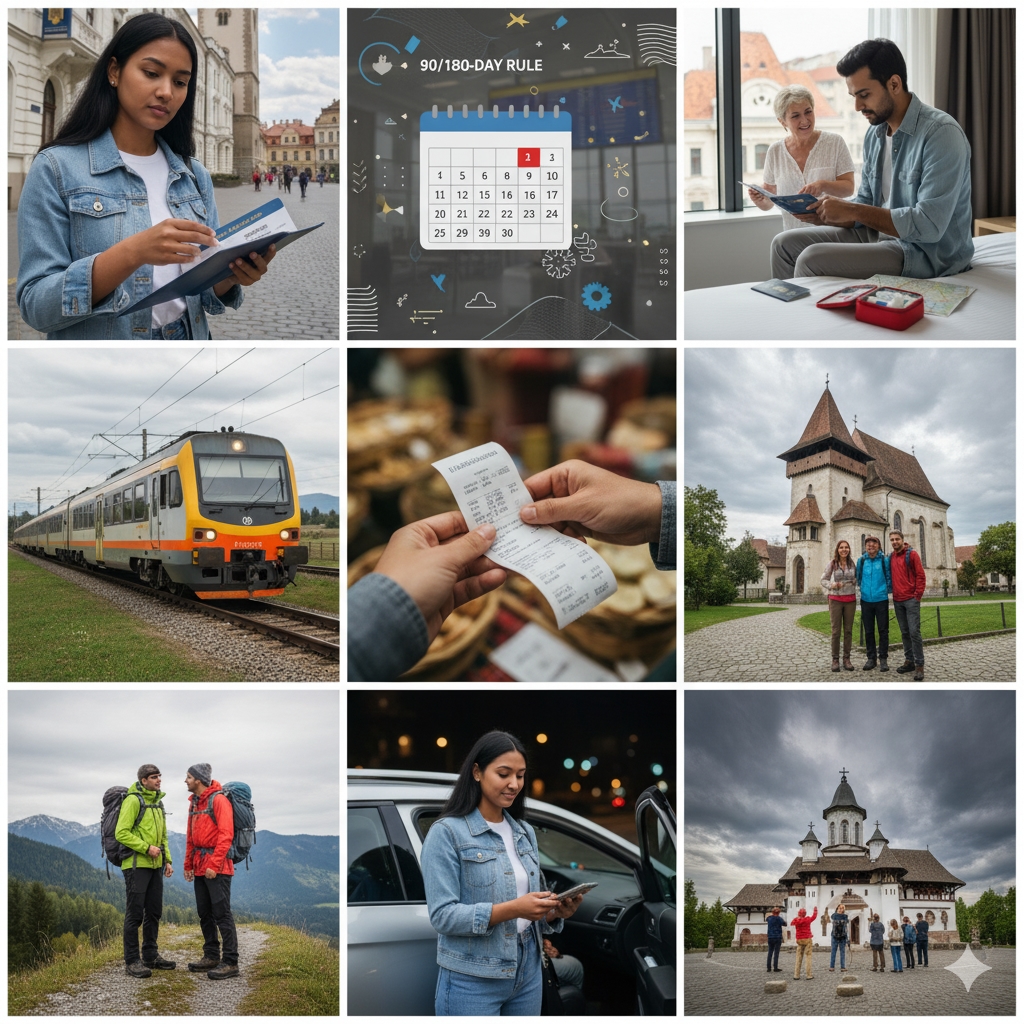
Romania e‑Visa FAQs
Q: Is the e‑Visa the same as a Schengen visa?
A: Not exactly. Romania is an EU member state, but historically not part of the Schengen Area (though this may change). For now, a Romanian national short‑stay visa is a Romanian national visa and doesn’t automatically grant you access to other Schengen states unless explicitly allowed. Always check current rules.
Q: Can I apply for the e‑Visa from anywhere?
A: You must apply from your country of legal residence. The e Visa portal lets you submit the initial application, but you’ll usually attend the embassy/consulate in your region.
Q: What happens if my travel dates change after I’ve submitted?
A: If the change is small (e.g., departure later by a few days), contact the embassy/consulate to check if your visa can still be used. If major changes occur, you may need to apply anew.
Q: Can I enter Romania multiple times?
A: Possibly—if your visa sticker indicates “multiple entry”. But be sure that your total stay does not exceed the allowed period under the 90/180 rule.
Q: Do I need to provide a hotel booking for the entire stay?
A: Generally yes—provide proof of accommodation, either all nights or at least for a significant portion, plus an itinerary of your stay. If staying with a friend/family, an invitation plus their full address and identity may be required.
Q: Is the visa fee refundable if I cancel the trip?
A: No—the fee is non‑refundable whether the visa is approved or rejected. The MAE site states non‑payment triggers inadmissibility; payments made are part of processing.
Q: Can I rely on travel insurance from my home country?
A: Yes, provided it meets the required coverage (for Romania/EU, medical/hospitalisation/repatriation) and is valid for the duration of your stay in Romania. Always carry the policy documents.
Q: What if I overstay by accident?
A: Overstaying can result in fines, deportation, and difficulties with future visa or entry permissions. It’s best to leave before your authorised stay ends. In rare cases where you cannot leave (force majeure, health emergency) you may apply for an extension—but this is exceptional.
